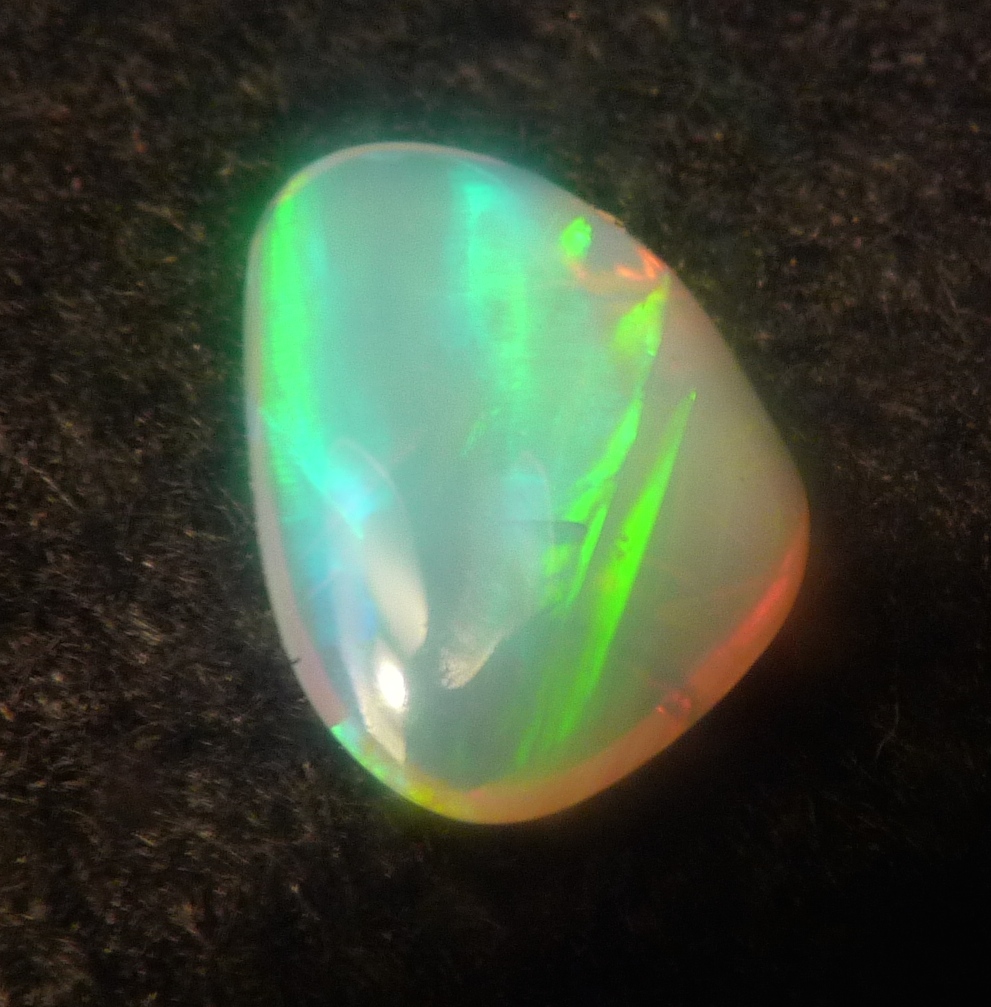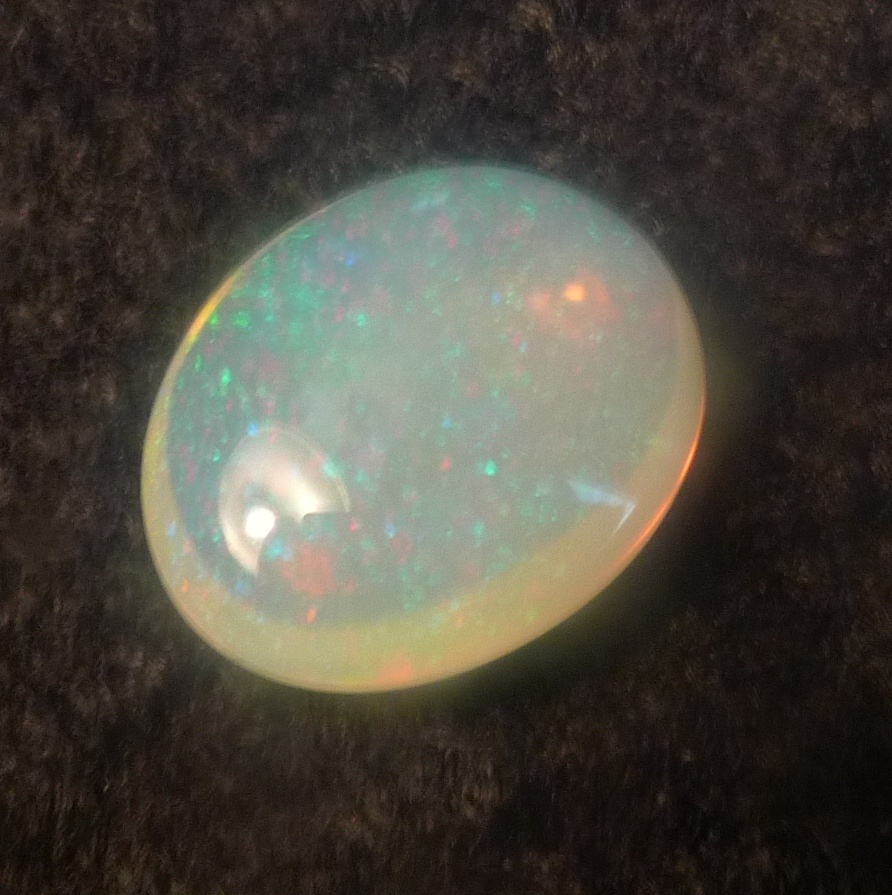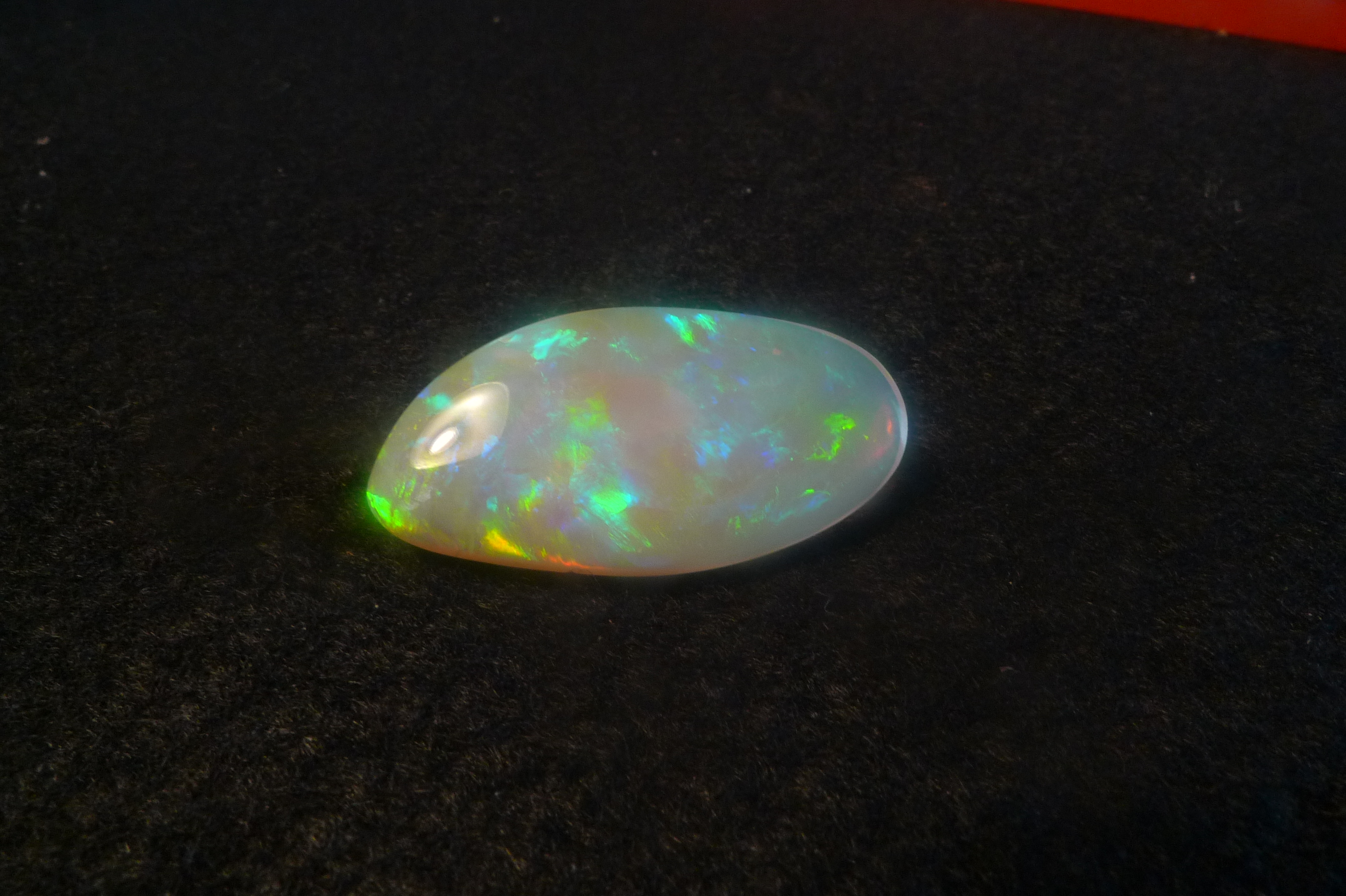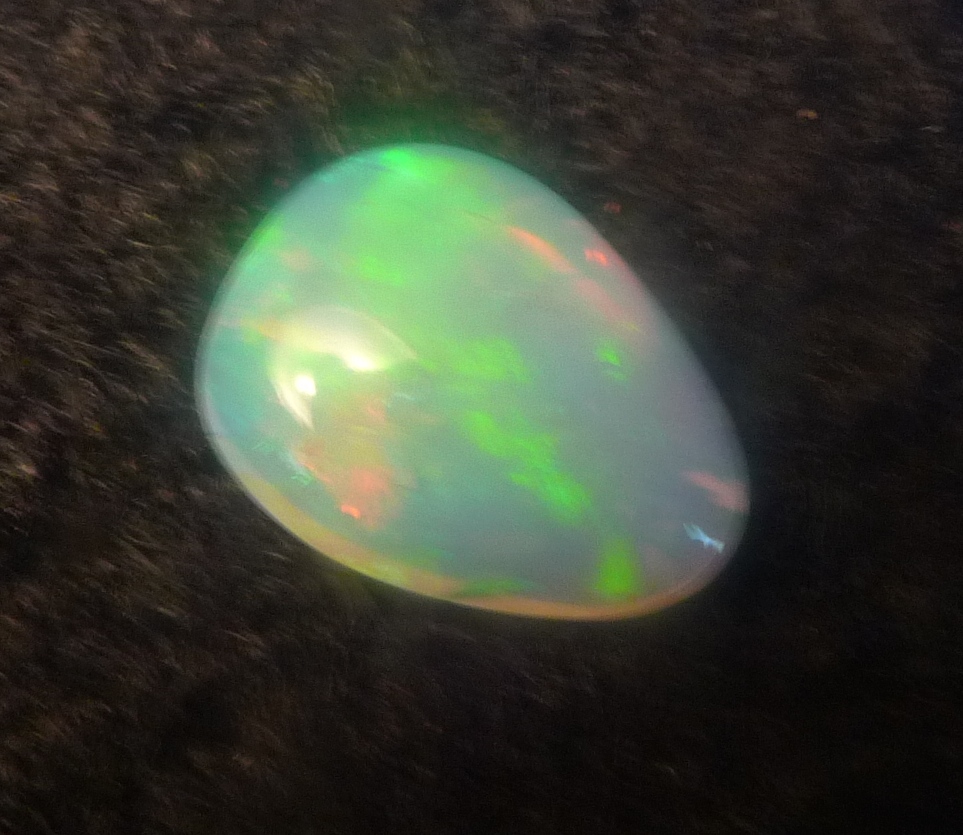Opal is a form of silica which has water molecules attached to it (varying from 3% to 21%) and is called hydrated silica. It is an amorphous material, which means that it does not have a crystalline structure. It's internal molecular structure can be ordered. Opal consists at a micro level of a 3 dimensional grid of minute silica spheres each separated by voids. These are very small and can be arranged in a regular hexagonal or cubic close packed lattice or they can be arranged in a random pattern. If they are arranged in a regular pattern the opal formed is called "precious opal" and will display various colours when light is diffracted by these spheres particles. The size and spacing of these silica spheres will determine the colours shown by the opal. If the array of spheres is random then there will be no display of colour and the opal material is called common opal.
Common opal is found all over the world and has little value. The common opal found in association with precious opal is called "potch" in Australia. While potch may not have much value it is used as a backing for doublets and triplets especially by opal cutters who wish their doublets and triplets to be all opal.
Opal was deposited after silica rich water seeped through surface layers at relatively low temperatures and filled fissures in many kinds of rocks depending on the location. The most common types of rock where opal is found are sandstone, limonite (Iron ore) and and basalt. In Australia most of the opal is associated with old sea beds and hence the opal ended up in fissures in sandstone which was the old sea bed. It has also filled cavities left when the the shells and bones of sea creatures has dissolved over time.
Opal has a hardness of 5.5 to 6.5 on Mohrs scale of hardness. Quartz, which is also a silica compound has a hardness of around 7 making it much harder than opal.
The term opal apparently comes from the Greek word "Opallus" which means to "see a change of colour".
Opal occurs with many different background or body colours. The body of the stone can be transparent, white, green, blue, yellow, grey or black. Experts believe the body colour is formed by the addition of minute amounts of impurities attached to the silica molecules. It is believed that volcanic ash gives the black opal it's background colour and that small traces of iron give "Fire Opal" it's characteristic red, orange or yellow colour. I have not been able to confirm what compounds cause the green, blue or yellow body colours that I have seen in opal.
This post is mainly about Australian "Crystal Opal". The term crystal opal comes from the definition that the body colour of the opal is crystal clear. As explained earlier opal does not have a crystalline structure. This means that if you break it, it will randomly break into pieces and not fracture along any internal crystalline plane. If you hold up a piece of opal in front of a white light source and let the light pass through the opal you will be able to detect the body colour. If it is clear the opal is classified as crystal opal. Looking at the opal this way you will not be able to see any play of colour. The play of colour only occurs when light is reflected back from the opal after the white light is diffracted, or broken into various different wavelengths by the molecular arrangement within the opal.
A good crystal opal will have a very transparent body colour and very bright flashes of colour throughout the stone. The brighter the flashes of colour and the extent of the flashes will determine the relative value of the opal. If the body of the opal is more translucent, ie not so clear, then the value of the stone will be reduced. Usually the colour flashes of the translucent opals are more subdued as well.
Below are some examples of crystal opal I have cut over the years.

This first photograph is of a piece of Mintabie crystal opal with a wavy surface. It displays beautiful green and blue flashes with a hint of orange.

This second photograph is of a piece of pin-fire crystal opal from Andamooka. The colours are more subtle than the Mintabie opal but it is still a beautiful gem.

This stone is a large crystal gem from Mintabie. It has mainly blue and green flashes with some yellow and orange. It is truly a beautiful crystal opal.

This is a smaller gem from Andamooka showing lovely greens and oranges.
Of all the various types of opal I prefer the crystal opal. Its transparent body colour really allows the bright colour flashes to jump out. If you have a thin piece of crystal opal you can back it with a piece of black potch and produce a stunning doublet.
Johno